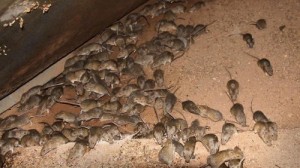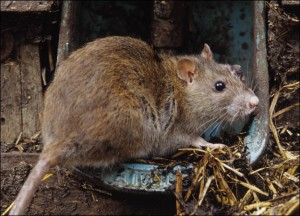The Difference Between Rats And Mice
November 8, 2012 by admin
Filed under Home Maintenance, Pest Control
Risk/damage
Rats and mice will invade buildings in search of food and shelter. In doing so they may be involved in the transmission of disease, soiling and destroying belongings, damaging equipment and can cause serious structural damage by gnawing through cables, water pipes and woodwork and so on. They also eat and destroy food stores.
Rats can be a serious risk to health. They will destroy and contaminate food stores and carry many forms of disease including Salmonella and Weils Disease through their droppings and urine, some of which can be fatal to humans, although this is very rare.
Mice, like rats, can spread disease including Salmonella. They contaminate food with their urine, droppings and fur.
Biology and behaviour
Rats and mice move rapidly and are excellent climbers and have no problem climbing vertical brick walls. They are also active burrowers and like to build nests in compost heaps or underneath hedges, sheds and decking. In the house they will nest in wall cavities and beneath floorboards. They are mainly active at night feeding on a range of commodities, particularly cereals and cereal products. They will eat about 10% of their own body weight of food daily. Rats require a regular supply of water, whereas mice do not as there is normally enough to survive on in their food. Rats are also good swimmers and are often found in sewers where there is food, water and shelter.
The front teeth of rats grow continuously and to keep the teeth to a useful length the rat needs to gnaw on hard objects all the time; objects can include lead water pipes, brickwork, electric cables, wood and anything else available. They usually have well worn runs between their living area and their food and water sources.
Mice will easily enter gaps of 5mm wide. They are very good climbers. If a pencil fits in a gap, then a mouse can get in! They prefer to nest in dark secluded areas with little chance of disturbance. Foraging territories are no more than 6 metres away. If there is abundant food nearby they can nest within 1.2-1.6 metres of the source. Droppings are around 4-8mm rod shaped, resembling a piece of lead from a pencil.
Life expectancy of a rat is around one year, during which female rats will typically breed five times and produce an average of 8 offspring. A mouse life expectancy is around one year, during which a female may breed up to six times and produce about six offspring.
Signs of infestation
Rats and mice need to gnaw to keep their constantly growing incisor teeth worn down and they damage woodwork, plastic and lead pipes and will sometimes strip insulation from electrical cables. Holes made by mice tend to be 20mm in diameter in walls etc. whereas rats tend to be 80mm. Rodents having established the best route from one place to another use it frequently and this “run” becomes soiled with grease and dirt and leaves a “smear”. Footprints are sometimes apparent on dusty surfaces. Finally, the faeces or droppings of rats and mice are a good indication of the cause, size and duration of the infestation.
Signs of rats
Rat droppings – 10mm spindle shaped, usually round corners.
Unusual smells – a longstanding problem can create a stale smell.
Holes – which appear in the garden, approx. 7-12cm in size with a pile of earth near the entrance.
Rat runs – a continuous depression in grass or other low vegetation, a smooth pathway may be visible on bare earth.
Gnawing – often to the bottom of wooden doors and sheds.
Scattering – of compost being dragged out of bins or heaps.
Signs of mice
Droppings in drawers and cupboards.
Food packets nibbled and chewed.
Soap and candles chewed and nibbled.
Nest made of shredded paper, card, materials or a mixture
Prevention of rats
Keep your property in a good state of repair and closing small gaps. A rat can get through a space as small as 10mm high.
Remove sources of water and food – this includes food left out for the birds and other animals as it will also attract rats. Windfall apples and other fruit should also be cleared up as soon as possible.
Clearing areas which could provide nests or shelter
Covering the ends of exposed downpipes with chicken wire or other suitable material as rats will use downpipes as a means of climbing to roof spaces.
Special attention should be given to compost heaps which should be kept contained and tidy.
While rodents are active no food waste should be placed on a compost heap unless the compost is stored in a lidded composter
Prevention of mice
Pet foods and other food products should not be stored in accessible areas such as garages and sheds.
Kitchens should be kept clear of spilled food and no food should be left out but should be stored in a suitable container.
Keep your property in good repair and close or fill any possible entry holes.
Control
While there are many things you can do to control rodent problems, serious infestations may need professional help to be successful.
With all pest control operations much can be achieved without the use of pesticides. Removal of food, water and harbourages (this is anywhere rodents could build their nest) will deny rodents their main requirements for survival. Repair of damage caused by rodents or rodent proofing may be required but should not be attempted until the pest control operative has visited and suitably treated. Advice on necessary precautions will be given to prevent further problem.
https://www.stedmundsbury.gov.uk/environment/environmental-protection/rats-and-mice.cfm

